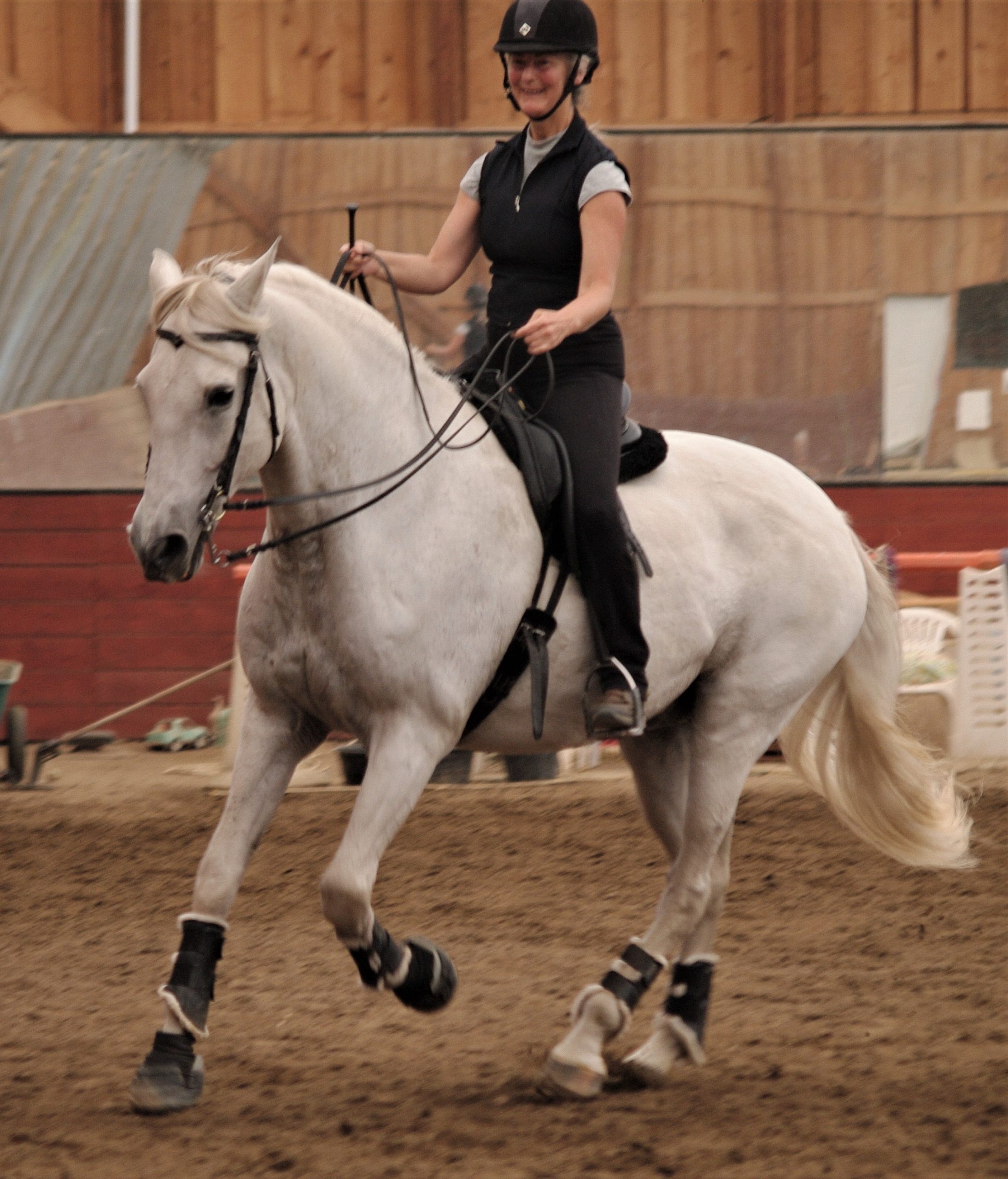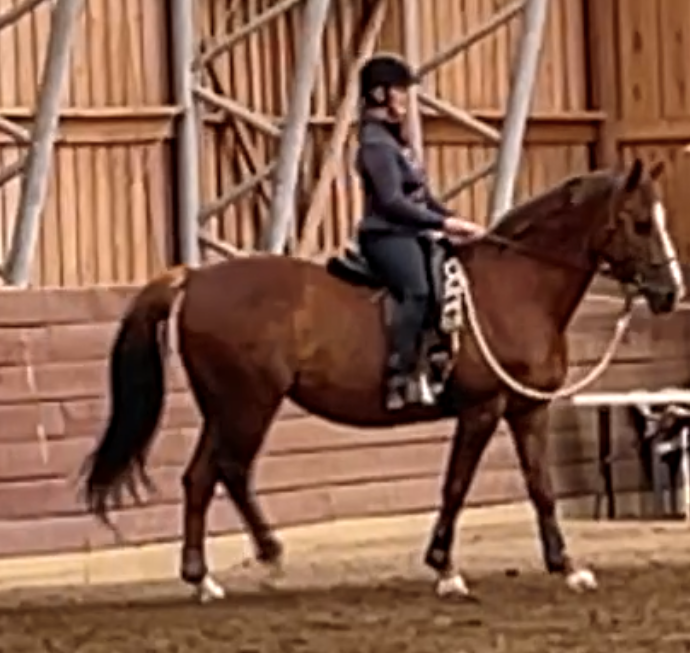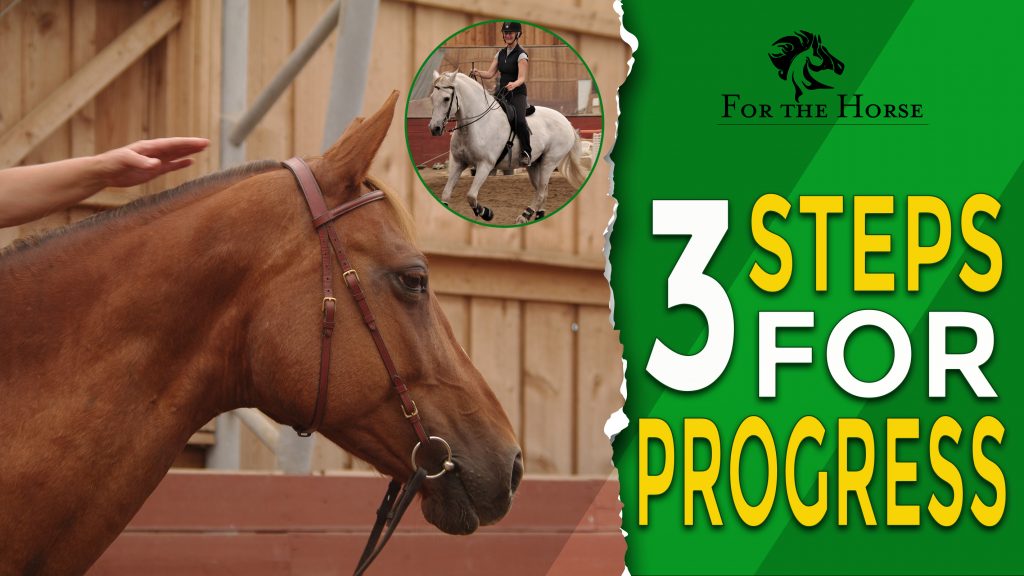How do you make progress with your horse when your horse is spooky?
When we're dealing with life and horses, it's not the spookiness or the anxiety that really matters, is what you do with it.
If you can get curious enough to explore what to do with anxiety, then that is what we can explore in this article.
These are the three steps that you can take to still make progress with your horse, even if there's anxiety there, even if your horse is spooky.
The first thing to do is....
#1. Tune Into Your Horse
Tune into your horse...
and to tune into your horse on a very deep level...
A lot of people, you know, they'll say, "Oh, my horse is spooking and it doesn't mean anything that the horse is just trying to give me a hard time".
Horses when they're spooky, when they're scared, they have a reason.
Yes!
They have a reason for being that way. They need to be that way. They're perceiving something that we possibly are not, they have much more attunement to their environment and their senses are much more aware than we are.
So for us to make the conclusion that they are being silly, is not listening to our horse is not tuned into our horse.
It's not something to be ignored. It's not something to be passed up.

It's something for us to really pay attention to. When you acknowledge what your horse is saying to you, you might say something like, "Okay, I feel that you're anxious", "I know that you're anxious".
Maybe you're not even sure what your horse is anxious about. But the fact that you're acknowledging it, and you can acknowledge it with your thoughts, which will then go into your emotions, which that will be the energy that your horse receives.
I acknowledge that, but let's go check it out together...if this is safe for you to do so, "let's go check it out".
For example, if your horse is spooking at the door in the indoor acknowledge it, and then say, "let's go check it out and ride right over to there, or lead your horse over to the door".
WORK TOWARDS OVERCOMING THE ANXIETY TOGETHER
The more times you can actually acknowledge that this is going on, and tune into your horse on this level, with your thoughts...maybe you verbalize it with your words, if you want to if that helps you, the more your horse will know that he or she is being heard.
And then the more your horse will be not afraid to speak up. And this is we want ... they feel comfortable speaking up so that we can then listen and we can act in accordance, and then resolve the issue together.
On the flip side, because I also deal with a lot of students with their horses, who are desensitized with robotic behaviour...the horse decides to shut down,to turn off because there's no sense speaking up, there's no sense expressing what they're feeling because they're not listened to.
But underneath, there is still that spookiness/anxiousness because it's not been solved.
Maybe your horses alright with plastic bags, but the horse is not in a conversation with you. And therefore your horse is not going to build more of a bond or a relationship with you.
In our Harmony For the Horse Program we teach you how to develop that conversation with your horse that is imperative, so that your horse will be calmer, more connected and a joy to be with.
CLICK HERE to discover more about how we can help you to reach freedom, achievement, oneness and joy that you most seek with your horse.



#2. Know That The Anxiety Has Layers
So it's not all of a sudden that this is going to show up, there are layers behind it.
An anxious horse always has layers of anxiety.
What we need to do is get to the root of the worry, get to the root of the problem.
A lot of what we do in our program is work with dysfunctional movement. The layers that are the levels in that dysfunctional movement.
One of our students in our program had a horse who was blocking, bracing tight, and had a stiff spot in the upper part of the neck.
And this was causing the horse a lot of anxiety, because of the pain.
And along with the pain, there's the emotional strain on the body, so she didn't realize that this was happening within her horse.
We took her through our process, and helped her to overcome this dysfunctional pattern so they could make progress that they only dreamt of before joining us!
Chronic dysfunction, at the base of the neck, in the thoracic vertebrae, one shoulder weighted more, whatever the situation is, there's going to be pain , or there's going to be some stiffness, and this leads to anxiety.
If you're helping your horse to get on the path functional, proper, normal movement, then there's a lot less anxiety within your horse.
Sometimes there's a large spook that seems to come out of nowhere ... spin around, jump sideways, these large spooks can have these layers to them. It doesn't just come out of nowhere.
Underneath there is tension, the desire to spook, the need for the horse, to reorient their bodies, to find comfort.
For example with lead changes...
If your horse is not balanced they're not comfortable within their body.
So they need to become spooky, or jumpy to align themselves so that they can perform what you're asking.
And, last but not least...
#3. Normal Movement Patterns For The Rider
A lot of students come to me experiencing pain...experiencing pain when they ride or pain in life in general.
Having been through a major spinal injury myself and having recovered, I understand what it's like to be incapacitated.
Maybe you have sciatica, perhaps when you ride, or lumbar pain, or shoulder pain.
Unfortunately, not many riders will actually get to experience their own true movement pattern because it's just not taught.



With pain in our bodies as riders and this dysfunctional movement in our own bodies, that can cause our horses to be anxious, that can cause our horses to spook because what we're saying through our bodies is not clear to them.
If you have pain, or you have dysfunctional movement within your body, there is a solution to become functional again.
Sometimes we don't realize we have these dysfunctional movements because it becomes the new norm, but it's not normal.
Our bodies need to be optimal.
If you want the support, to find your optimal, unique motion and riding movement so that you can get the results that really matter to you, that will create the deepest of transformation in your life and your horse's life...
CLICK HERE to schedule a call with us!
MORE RESOURCES TO HELP YOU BUILD YOUR DREAM HORSE

